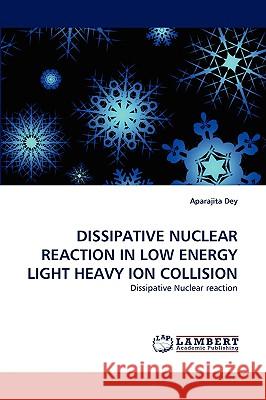Dissipative Nuclear Reaction in Low Energy Light Heavy Ion Collision » książka
Dissipative Nuclear Reaction in Low Energy Light Heavy Ion Collision
ISBN-13: 9783838386218 / Angielski / Miękka / 2010 / 176 str.
Dissipative Nuclear Reaction in Low Energy Light Heavy Ion Collision
ISBN-13: 9783838386218 / Angielski / Miękka / 2010 / 176 str.
(netto: 290,36 VAT: 5%)
Najniższa cena z 30 dni: 304,88
ok. 10-14 dni roboczych
Bez gwarancji dostawy przed świętami
Darmowa dostawa!
The dissipative nuclear reaction mechanism in low energy light heavy-ion collisions have been studied. Inclusive energy distributions for various fragments and light charged particles have been measured in a wide angular range in several reactions. In the 20Ne+12C reaction, the fragment yield was mostly from the equilibrium decay of composite system, although the cross-sections for B, C, N fragments were higher than the statistical model predictions. This enhancement in cross-section indicated the survival of orbiting-like phenomenon at the energy > 7 MeV/nucleon. The composite system is also deformed. In 20Ne+27Al reaction, both deep-inelastic and fusion-fission processes were found to contribute significantly to the fragment yield. The time scale for the deep-inelastic process was 10-22 seconds. It has been found that the extracted values of angular momentum dissipation were more than the corresponding phenomenological (sticking) limit predictions for light fragments. In addition, in- plane coincidence data gives information about the decay of the hot composite formed 20Ne+12C reaction at 158 MeV.
The dissipative nuclear reaction mechanism in low energy light heavy-ion collisions have been studied. Inclusive energy distributions for various fragments and light charged particles have been measured in a wide angular range in several reactions. In the 20Ne+12C reaction, the fragment yield was mostly from the equilibrium decay of composite system, although the cross-sections for B, C, N fragments were higher than the statistical model predictions. This enhancement in cross-section indicated the survival of orbiting-like phenomenon at the energy > 7 MeV/nucleon. The composite system is also deformed. In 20Ne+27Al reaction, both deep-inelastic and fusion-fission processes were found to contribute significantly to the fragment yield. The time scale for the deep-inelastic process was 10-22 seconds. It has been found that the extracted values of angular momentum dissipation were more than the corresponding phenomenological (sticking) limit predictions for light fragments. In addition, in- plane coincidence data gives information about the decay of the hot composite formed 20Ne+12C reaction at 158 MeV.











